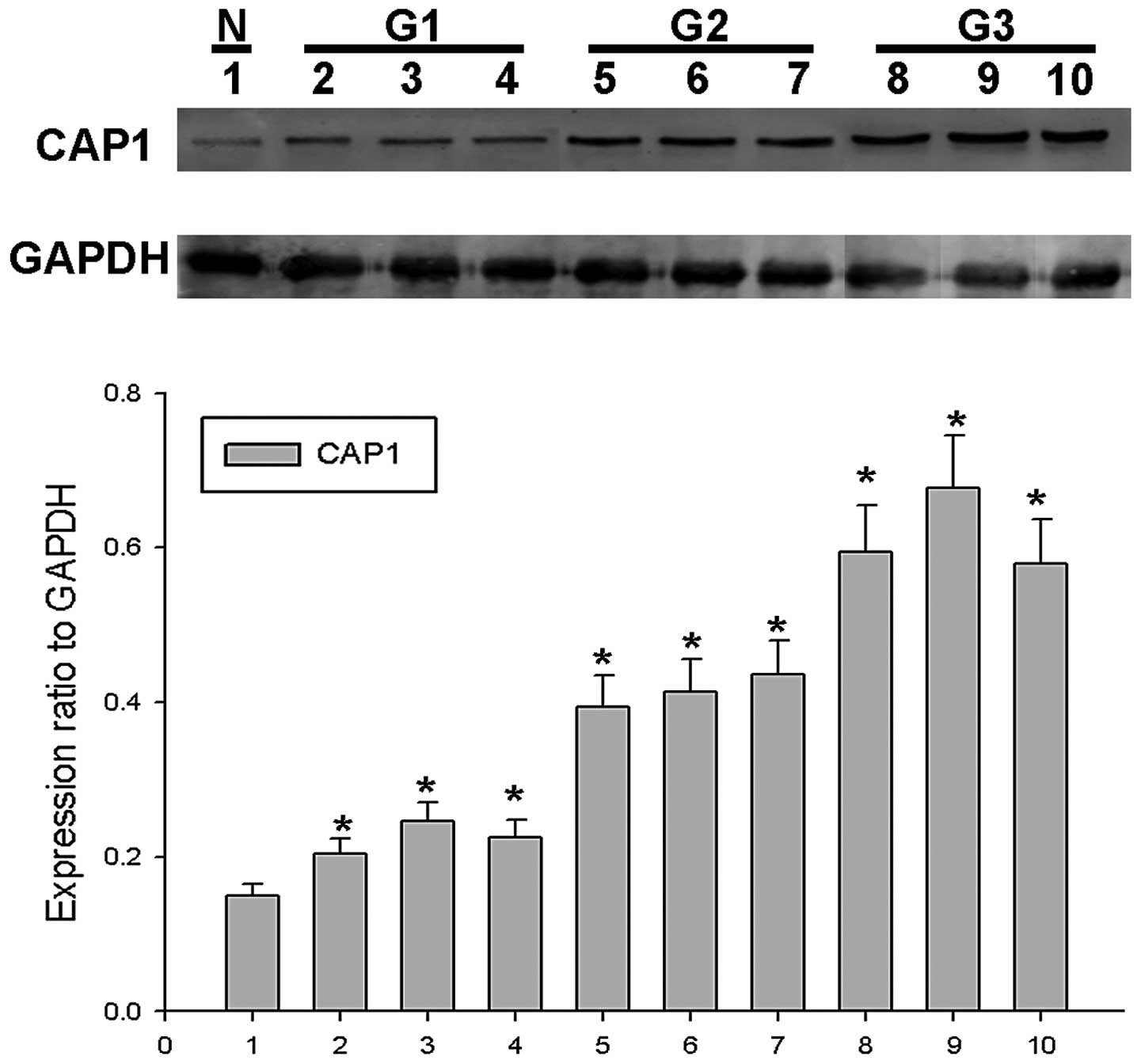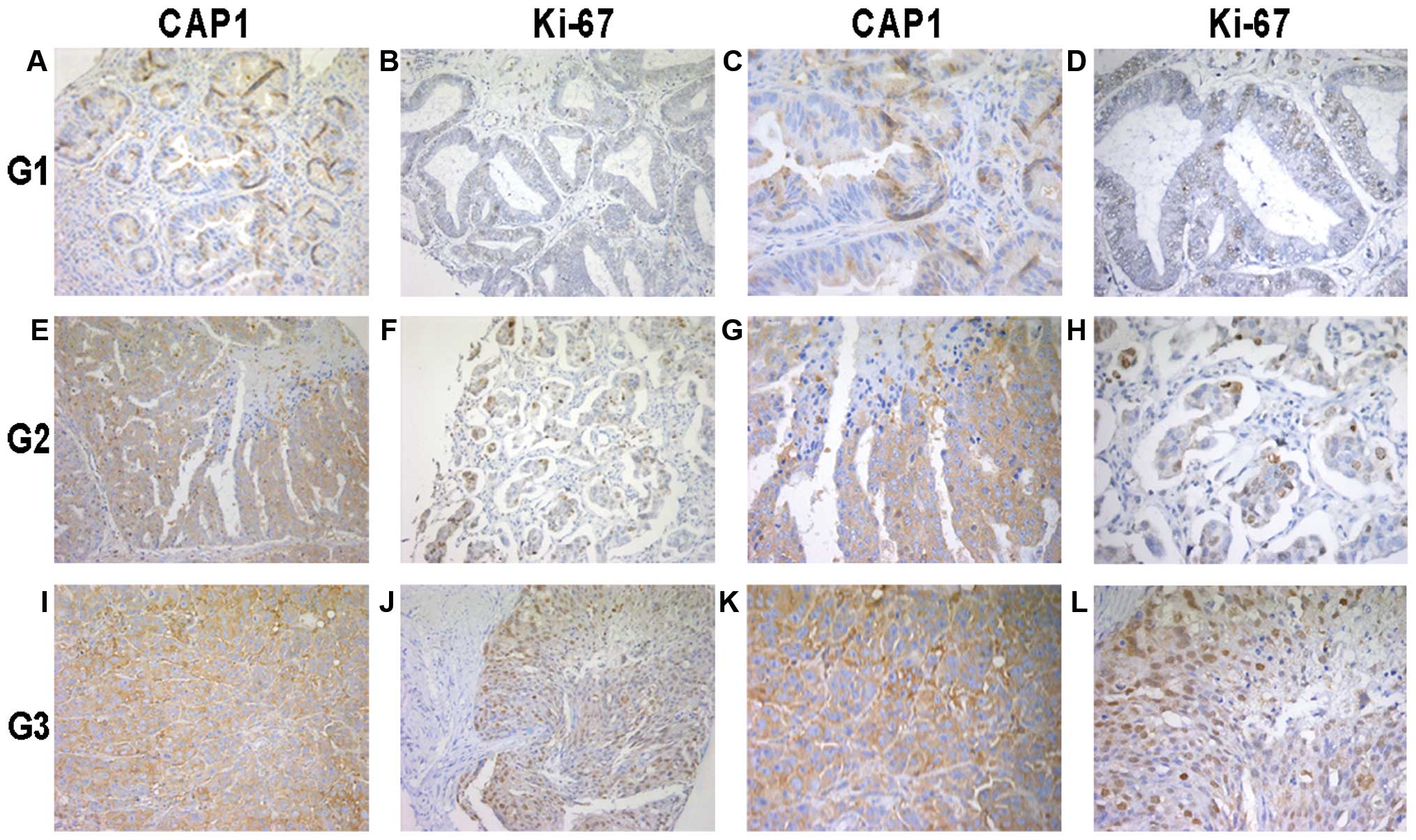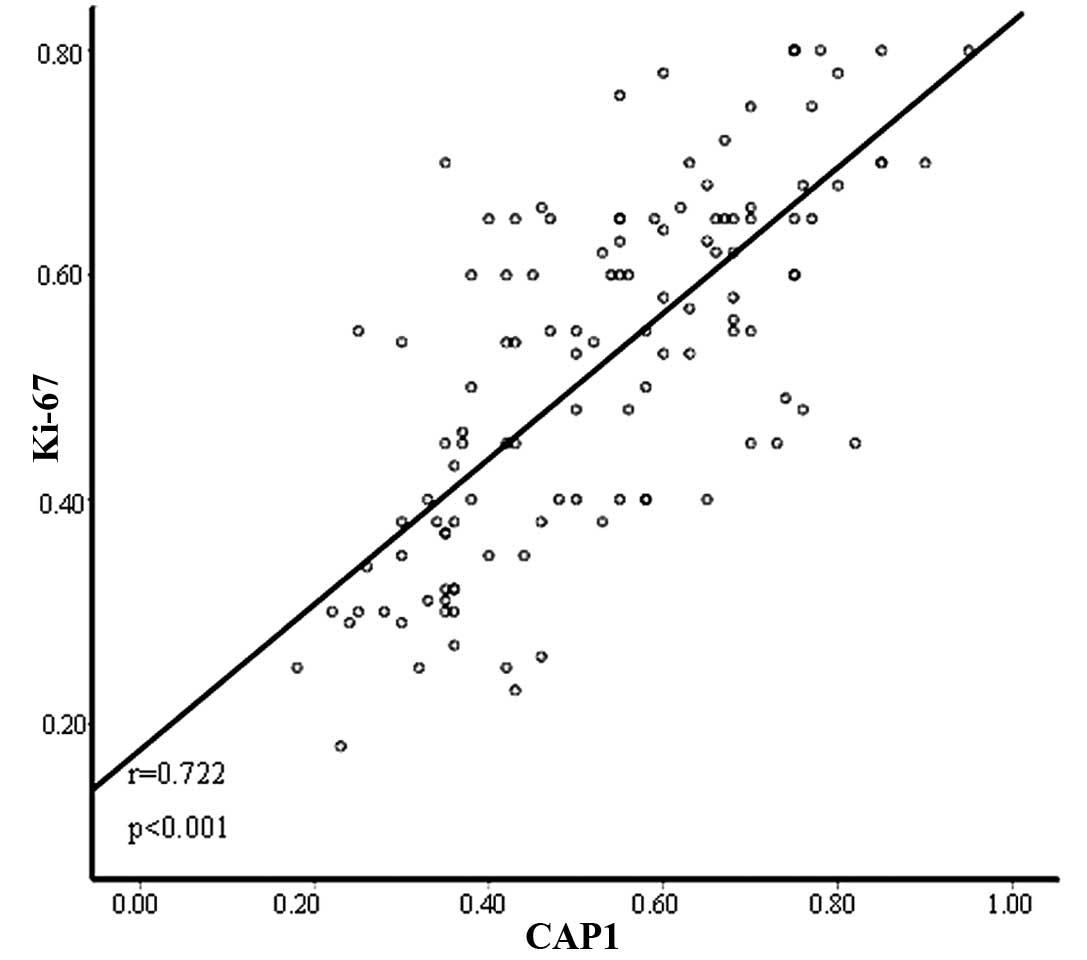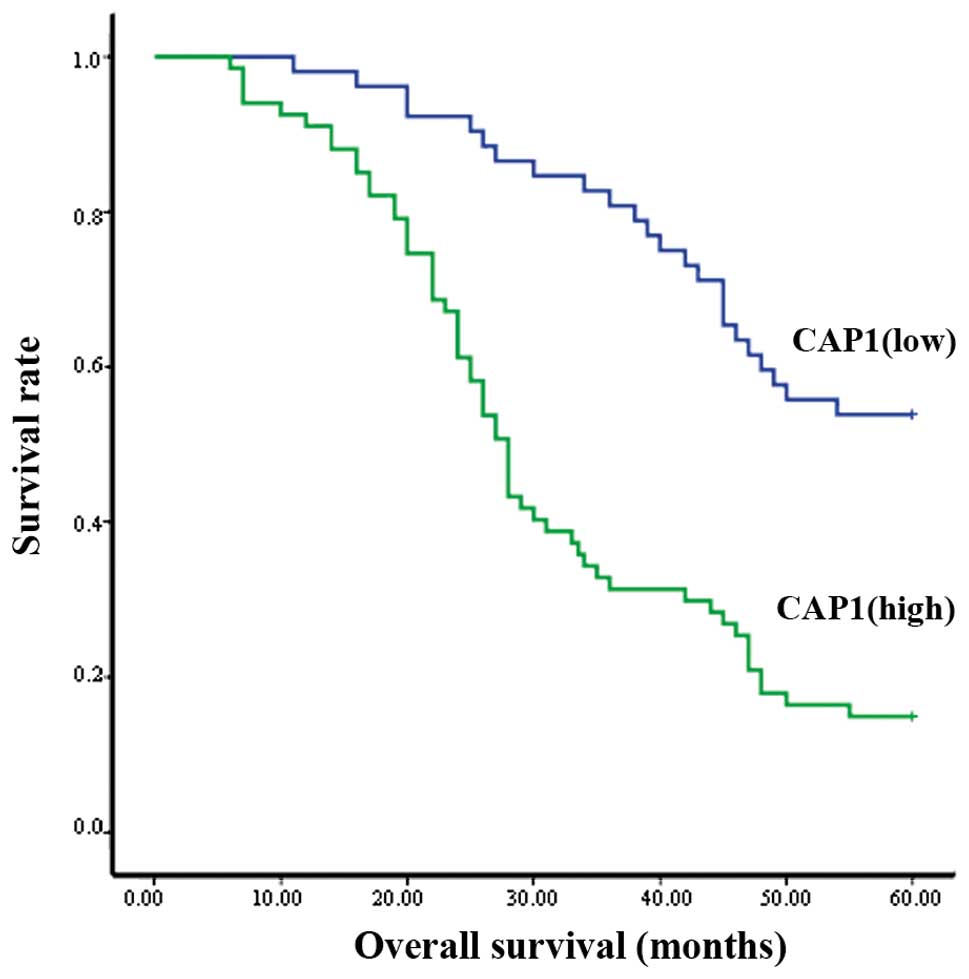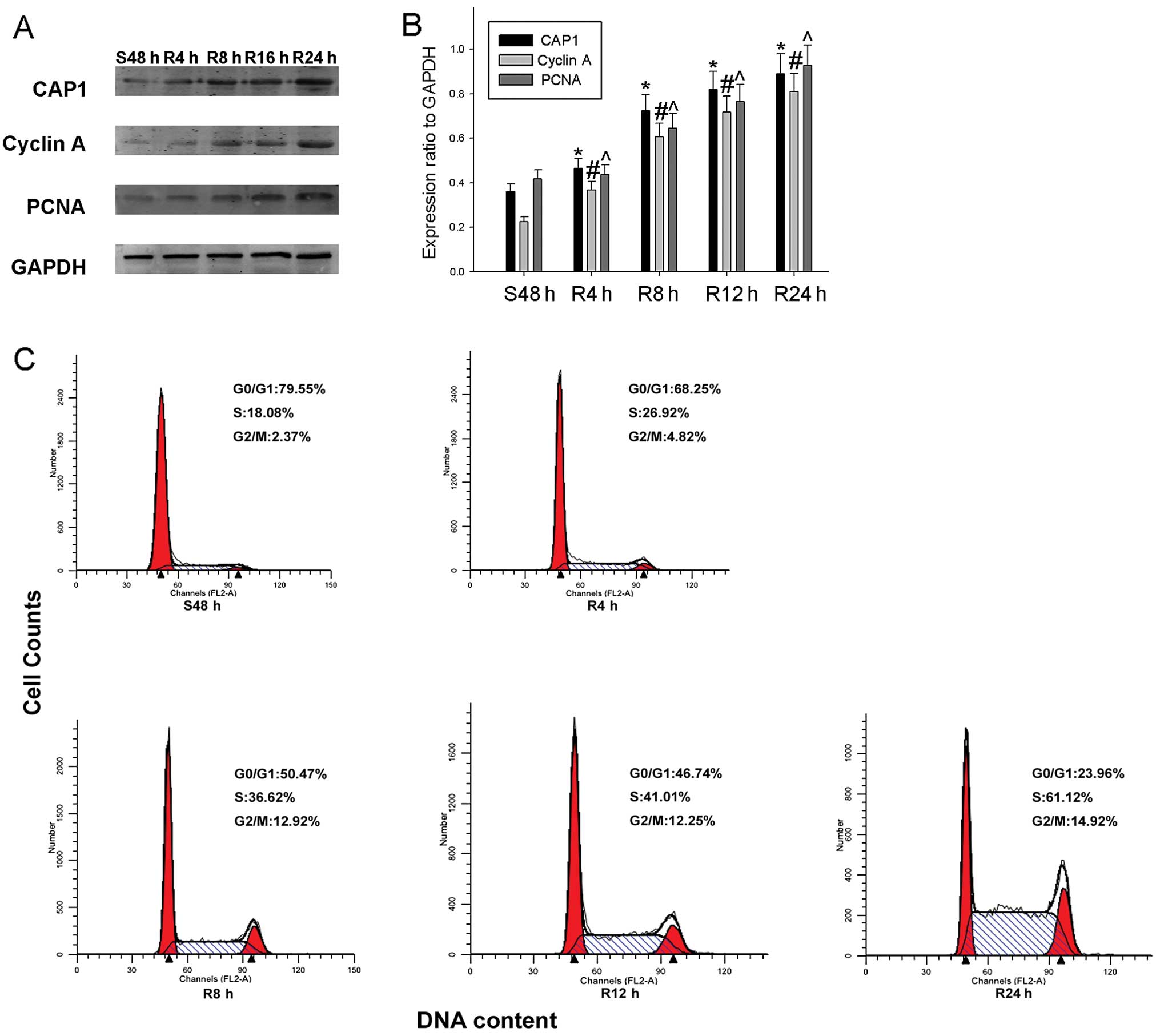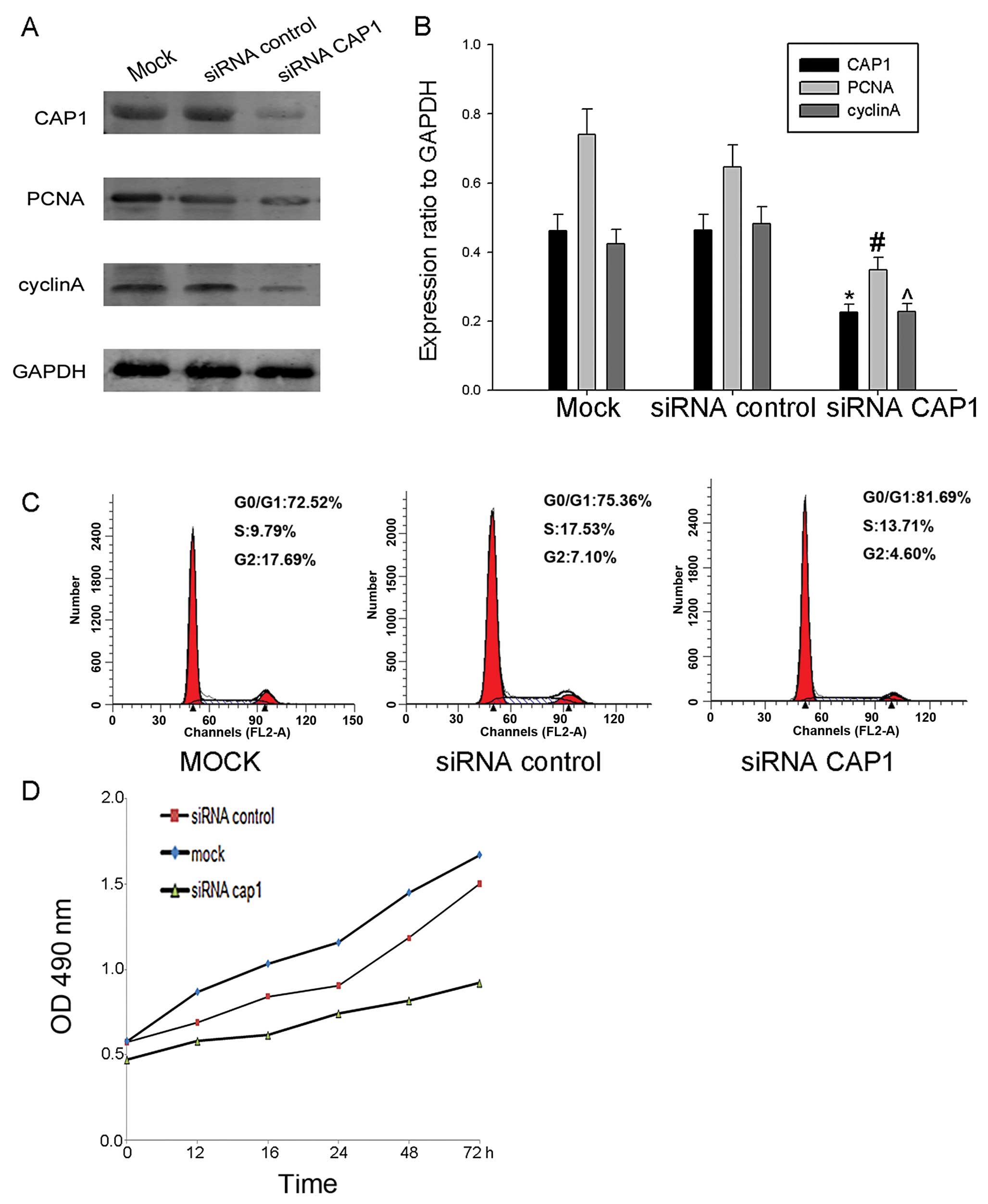|
1
|
Menczer J, Chetrit A and Sadetzki S;
National Israel Ovarian Cancer Group: Uterine metastases in ovarian
carcinoma: frequency and survival in women who underwent
hysterectomy. J Gynecol Oncol. 21:191–195. 2010. View Article : Google Scholar : PubMed/NCBI
|
|
2
|
Park B, Park S, Kim TJ, et al:
Epidemiological characteristics of ovarian cancer in Korea. J
Gynecol Oncol. 21:241–247. 2010. View Article : Google Scholar
|
|
3
|
Chang E, Heo KS, Woo CH, et al: MK2
SUMOylation regulates actin filament remodeling and subsequent
migration in endothelial cells by inhibiting MK2 kinase and HSP27
phosphorylation. Blood. 117:2527–2537. 2011. View Article : Google Scholar :
|
|
4
|
Kirfel G, Rigort A, Borm B and Herzog V:
Cell migration: mechanisms of rear detachment and the formation of
migration tracks. Eur J Cell Biol. 83:717–724. 2004. View Article : Google Scholar
|
|
5
|
Hall A: The cytoskeleton and cancer.
Cancer Metastasis Rev. 28:5–14. 2009. View Article : Google Scholar : PubMed/NCBI
|
|
6
|
Makkonen M, Bertling E, Chebotareva NA,
Baum J and Lappalainen P: Mammalian and malaria parasite
cyclase-associated proteins catalyze nucleotide exchange on G-actin
through a conserved mechanism. J Biol Chem. 288:984–994. 2013.
View Article : Google Scholar :
|
|
7
|
Fedor-Chaiken M, Deschenes RJ and Broach
JR: SRV2, a gene required for RAS activation of adenylate cyclase
in yeast. Cell. 61:329–340. 1990. View Article : Google Scholar : PubMed/NCBI
|
|
8
|
Field J, Vojtek A, Ballester R, et al:
Cloning and characterization of CAP, the S. cerevisiae gene
encoding the 70 kd adenylyl cyclase-associated protein. Cell.
61:319–327. 1990. View Article : Google Scholar : PubMed/NCBI
|
|
9
|
Peche V, Shekar S, Leichter M, et al:
CAP2, cyclase-associated protein 2, is a dual compartment protein.
Cell Mol Life Sci. 64:2702–2715. 2007. View Article : Google Scholar : PubMed/NCBI
|
|
10
|
Matviw H, Yu G and Young D: Identification
of a human cDNA encoding a protein that is structurally and
functionally related to the yeast adenylyl cyclase-associated CAP
proteins. Mol Cell Biol. 12:5033–5040. 1992.PubMed/NCBI
|
|
11
|
Zelicof A, Gatica J and Gerst JE:
Molecular cloning and characterization of a rat homolog of CAP, the
adenylyl cyclase-associated protein from Saccharomyces cerevisiae.
J Biol Chem. 268:13448–13453. 1993.PubMed/NCBI
|
|
12
|
Yu G, Swiston J and Young D: Comparison of
human CAP and CAP2, homologs of the yeast adenylyl
cyclase-associated proteins. J Cell Sci. 107:1671–1678.
1994.PubMed/NCBI
|
|
13
|
Swiston J, Hubberstey A, Yu G and Young D:
Differential expression of CAP and CAP2 in adult rat tissues. Gene.
165:273–277. 1995. View Article : Google Scholar : PubMed/NCBI
|
|
14
|
Pollard TD and Cooper JA: Actin, a central
player in cell shape and movement. Science. 326:1208–1212. 2009.
View Article : Google Scholar : PubMed/NCBI
|
|
15
|
Baum B, Li W and Perrimon N: A
cyclase-associated protein regulates actin and cell polarity during
Drosophila oogenesis and in yeast. Curr Biol. 10:964–973. 2000.
View Article : Google Scholar : PubMed/NCBI
|
|
16
|
Baum B and Perrimon N: Spatial control of
the actin cytoskeleton in Drosophila epithelial cells. Nat Cell
Biol. 3:883–890. 2001. View Article : Google Scholar : PubMed/NCBI
|
|
17
|
Hubberstey AV and Mottillo EP:
Cyclase-associated proteins: CAPacity for linking signal
transduction and actin polymerization. FASEB J. 16:487–499. 2002.
View Article : Google Scholar : PubMed/NCBI
|
|
18
|
Kang CM and Jiang YW: Genome-wide survey
of non-essential genes required for slowed DNA synthesis-induced
filamentous growth in yeast. Yeast. 22:79–90. 2005. View Article : Google Scholar : PubMed/NCBI
|
|
19
|
Yusof AM, Hu NJ, Wlodawer A and Hofmann A:
Structural evidence for variable oligomerization of the N-terminal
domain of cyclase-associated protein (CAP). Proteins. 58:255–262.
2005. View Article : Google Scholar
|
|
20
|
Loisel TP, Boujemaa R, Pantaloni D and
Carlier MF: Reconstitution of actin-based motility of Listeria and
Shigella using pure proteins. Nature. 401:613–616. 1999. View Article : Google Scholar : PubMed/NCBI
|
|
21
|
Pollard TD, Blanchoin L and Mullins RD:
Molecular mechanisms controlling actin filament dynamics in
nonmuscle cells. Annu Rev Biophys Biomol Struct. 29:545–576. 2000.
View Article : Google Scholar : PubMed/NCBI
|
|
22
|
Bertling E, Hotulainen P, Mattila PK,
Matilainen T, Salminen M and Lappalainen P: Cyclase-associated
protein 1 (CAP1) promotes cofilin-induced actin dynamics in
mammalian nonmuscle cells. Mol Biol Cell. 15:2324–2334. 2004.
View Article : Google Scholar : PubMed/NCBI
|
|
23
|
Wang C, Zhou GL, Vedantam S, Li P and
Field J: Mitochondrial shuttling of CAP1 promotes actin- and
cofilin-dependent apoptosis. J Cell Sci. 121:2913–2920. 2008.
View Article : Google Scholar : PubMed/NCBI
|
|
24
|
Liu Y, Cui X, Hu B, et al: Upregulated
expression of CAP1 is associated with tumor migration and
metastasis in hepatocellular carcinoma. Pathol Res Pract.
210:169–175. 2014. View Article : Google Scholar
|
|
25
|
Yu XF, Ni QC, Chen JP, et al: Knocking
down the expression of adenylate cyclase-associated protein 1
inhibits the proliferation and migration of breast cancer cells.
Exp Mol Pathol. 96:188–194. 2014. View Article : Google Scholar : PubMed/NCBI
|
|
26
|
Tan M, Song X, Zhang G, et al:
Overexpression of adenylate cyclase-associated protein 1 is
associated with metastasis of lung cancer. Oncol Rep. 30:1639–1644.
2013.PubMed/NCBI
|
|
27
|
Li M, Yang X, Shi H, et al: Downregulated
expression of the cyclase-associated protein 1 (CAP1) reduces
migration in esophageal squamous cell carcinoma. Jpn J Clin Oncol.
43:856–864. 2013. View Article : Google Scholar : PubMed/NCBI
|
|
28
|
Zelicof A, Protopopov V, David D, Lin XY,
Lustgarten V and Gerst JE: Two separate functions are encoded by
the carboxyl-terminal domains of the yeast cyclase-associated
protein and its mammalian homologs. Dimerization and actin binding.
J Biol Chem. 271:18243–18252. 1996. View Article : Google Scholar : PubMed/NCBI
|
|
29
|
Noegel AA, Blau-Wasser R, Sultana H, et
al: The cyclase-associated protein CAP as regulator of cell
polarity and cAMP signaling in Dictyostelium. Mol Biol Cell.
15:934–945. 2004. View Article : Google Scholar :
|
|
30
|
Gerst JE, Ferguson K, Vojtek A, Wigler M
and Field J: CAP is a bifunctional component of the Saccharomyces
cerevisiae adenylyl cyclase complex. Mol Cell Biol. 11:1248–1257.
1991.PubMed/NCBI
|
|
31
|
Vojtek A, Haarer B, Field J, et al:
Evidence for a functional link between profilin and CAP in the
yeast S cerevisiae. Cell. 66:497–505. 1991. View Article : Google Scholar : PubMed/NCBI
|
|
32
|
Yamazaki K, Takamura M, Masugi Y, et al:
Adenylate cyclase-associated protein 1 overexpressed in pancreatic
cancers is involved in cancer cell motility. Lab Invest.
89:425–432. 2009. View Article : Google Scholar : PubMed/NCBI
|
|
33
|
Friedl P and Wolf K: Tumour-cell invasion
and migration: diversity and escape mechanisms. Nat Rev Cancer.
3:362–374. 2003. View
Article : Google Scholar : PubMed/NCBI
|
|
34
|
Moriyama K and Yahara I: Human CAP1 is a
key factor in the recycling of cofilin and actin for rapid actin
turnover. J Cell Sci. 115:1591–1601. 2002.PubMed/NCBI
|



